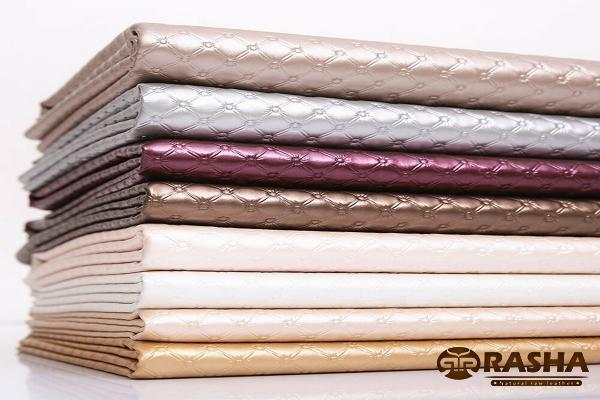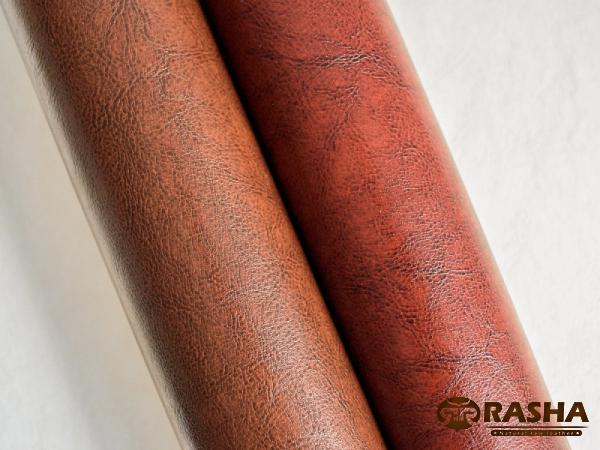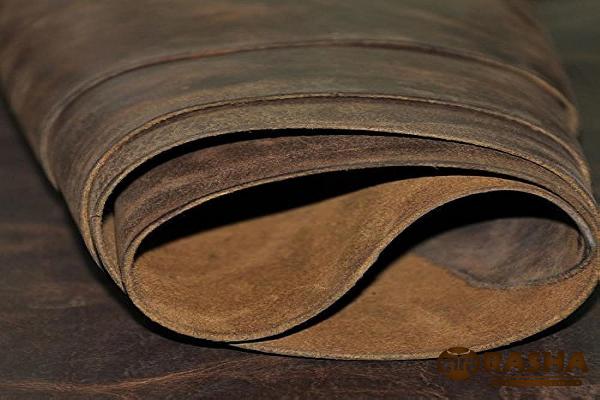Ostrich leather has long been revered for its luxurious texture, durability, and unique grain pattern. However, due to its limited availability and high cost, manufacturers and consumers often seek alternatives that can mimic its qualities at a more affordable price point. Fake ostrich leather fabric, also known as synthetic ostrich leather, has emerged as a popular substitute. This article provides an in-depth summary of fake ostrich leather fabric, including its production processes, advantages, limitations, and potential applications in the fashion and furniture industries. Understanding Fake Ostrich Leather Fabric: 1. Production Process: Fake ostrich leather fabric is typically made from polyurethane (PU) or polyvinyl chloride (PVC) materials. The production process involves applying layers of synthetic material to a fabric base, such as cotton or polyester, to create the desired texture and embossed pattern resembling ostrich leather. Additional treatments, such as dyeing and printing, are often employed to enhance the appearance and color of the fabric. 2. Advantages of Fake Ostrich Leather Fabric: a) Affordability: One of the primary advantages of fake ostrich leather fabric is its relatively low cost compared to genuine ostrich leather. This makes it a more accessible option for manufacturers and consumers who desire the look and feel of genuine ostrich leather without breaking the bank. b) Versatility: Fake ostrich leather fabric can be produced in a wide range of colors, finishes, and patterns, offering designers and manufacturers greater flexibility in their products. It can imitate not only the distinctive grain pattern of ostrich leather but also other leather types, providing ample room for creativity. c) Durability: Synthetic materials used in fake ostrich leather fabric are known for their durability and resistance to wear and tear. This makes the fabric suitable for various applications, including fashion accessories, footwear, upholstery, and furniture. d) Environmental Considerations: Compared to genuine leather, the production of fake ostrich leather fabric has a lower environmental impact. Synthetic materials can be produced with reduced water usage and fewer harmful chemical processes, making it a more sustainable choice for some consumers.
leather
 3. Limitations of Fake Ostrich Leather Fabric: a) Authenticity: Despite its best efforts, fake ostrich leather fabric cannot replicate the exact characteristics and feel of real ostrich leather. The natural variations in the texture and grain pattern of genuine ostrich leather cannot be fully duplicated, and discerning consumers may be able to distinguish between the two. b) Breathability: Genuine leather is known for its breathability, allowing the skin to regulate temperature and preventing moisture build-up. Fake ostrich leather fabric, on the other hand, lacks this characteristic, as synthetic materials often restrict air circulation. This limitation may impact comfort levels, particularly in certain applications such as footwear. c) Longevity: While fake ostrich leather fabric can be durable, it is generally less resistant to aging and degradation compared to genuine leather. Over time, the synthetic materials used in the fabric may show signs of wear, cracking, and fading, diminishing its overall lifespan and aesthetic appeal. d) Environmental Impact: Although synthetic materials used in fake ostrich leather fabric are considered more sustainable from a water and chemical usage perspective, their overall environmental impact is still a topic of debate. The disposal of synthetic materials and the microplastic pollution they potentially generate warrant further consideration. Potential Applications of Fake Ostrich Leather Fabric: 1. Fashion Accessories: The affordability and versatility of fake ostrich leather fabric make it popular for creating accessories such as bags, wallets, belts, and watch straps. The ability to produce the fabric in various colors and finishes lends itself well to appealing to a broad consumer base. 2. Footwear: Synthetic ostrich leather fabric is widely used in the footwear industry for both fashion and functional footwear. Its durability and ability to mimic the appearance of genuine ostrich leather make it an attractive option for manufacturing shoes, boots, and sneakers. 3. Upholstery and Furniture: Fake ostrich leather fabric finds applications in upholstery and furniture, offering an aesthetically pleasing alternative to genuine leather. Its durability, cost-effectiveness, and diverse color options make it suitable for creating chairs, sofas, headboards, and other furniture pieces. Conclusion: Fake ostrich leather fabric provides a more affordable and accessible alternative to genuine ostrich leather, allowing designers and manufacturers to incorporate the luxurious look and texture of ostrich leather into their products. While it may not fully replicate the authenticity and longevity of genuine leather, synthetic ostrich leather fabric offers its own unique advantages, including versatility and durability, making it a viable choice across various industries. As the demand for sustainable and innovative materials continues to rise, the development and improvement of fake ostrich leather fabric remain subjects of ongoing research and exploration.
3. Limitations of Fake Ostrich Leather Fabric: a) Authenticity: Despite its best efforts, fake ostrich leather fabric cannot replicate the exact characteristics and feel of real ostrich leather. The natural variations in the texture and grain pattern of genuine ostrich leather cannot be fully duplicated, and discerning consumers may be able to distinguish between the two. b) Breathability: Genuine leather is known for its breathability, allowing the skin to regulate temperature and preventing moisture build-up. Fake ostrich leather fabric, on the other hand, lacks this characteristic, as synthetic materials often restrict air circulation. This limitation may impact comfort levels, particularly in certain applications such as footwear. c) Longevity: While fake ostrich leather fabric can be durable, it is generally less resistant to aging and degradation compared to genuine leather. Over time, the synthetic materials used in the fabric may show signs of wear, cracking, and fading, diminishing its overall lifespan and aesthetic appeal. d) Environmental Impact: Although synthetic materials used in fake ostrich leather fabric are considered more sustainable from a water and chemical usage perspective, their overall environmental impact is still a topic of debate. The disposal of synthetic materials and the microplastic pollution they potentially generate warrant further consideration. Potential Applications of Fake Ostrich Leather Fabric: 1. Fashion Accessories: The affordability and versatility of fake ostrich leather fabric make it popular for creating accessories such as bags, wallets, belts, and watch straps. The ability to produce the fabric in various colors and finishes lends itself well to appealing to a broad consumer base. 2. Footwear: Synthetic ostrich leather fabric is widely used in the footwear industry for both fashion and functional footwear. Its durability and ability to mimic the appearance of genuine ostrich leather make it an attractive option for manufacturing shoes, boots, and sneakers. 3. Upholstery and Furniture: Fake ostrich leather fabric finds applications in upholstery and furniture, offering an aesthetically pleasing alternative to genuine leather. Its durability, cost-effectiveness, and diverse color options make it suitable for creating chairs, sofas, headboards, and other furniture pieces. Conclusion: Fake ostrich leather fabric provides a more affordable and accessible alternative to genuine ostrich leather, allowing designers and manufacturers to incorporate the luxurious look and texture of ostrich leather into their products. While it may not fully replicate the authenticity and longevity of genuine leather, synthetic ostrich leather fabric offers its own unique advantages, including versatility and durability, making it a viable choice across various industries. As the demand for sustainable and innovative materials continues to rise, the development and improvement of fake ostrich leather fabric remain subjects of ongoing research and exploration.
Specifications of leather
 I. The Growth of Synthetic Leather Market: The synthetic leather market has witnessed significant growth in recent years, driven by factors such as increasing consumer demand for affordable and sustainable alternatives to genuine leather, advancements in technology, and the rising popularity of vegan and cruelty-free products. Within this market, fake ostrich leather fabric has emerged as a prominent player, capturing the attention of manufacturers and consumers alike. II. Market Trends and Opportunities: The market for fake ostrich leather fabric is characterized by several trends and opportunities that businesses can leverage: 1. Rising Vegan and Sustainable Fashion: The growing awareness and concern for animal welfare and environmental sustainability have fueled the demand for vegan alternatives in the fashion industry. Fake ostrich leather fabric presents an opportunity for brands to cater to this emerging consumer segment and offer stylish and cruelty-free products. 2. Customization and Personalization: With advancements in printing and embossing technologies, manufacturers can now create customized patterns and designs on fake ostrich leather fabric. This enables brands to offer unique and personalized products, catering to the preferences of individual consumers. 3. Collaborations and Partnerships: Collaborating with designers, fashion brands, and furniture manufacturers can open up new avenues for businesses involved in the production of fake ostrich leather fabric. Such partnerships can enhance brand visibility, reach new markets, and drive innovation in product development. 4. Luxury and High-End Market: While fake ostrich leather fabric is primarily positioned as a more affordable alternative to genuine ostrich leather, there is also an opportunity to tap into the luxury market. By focusing on superior quality and craftsmanship, businesses can attract affluent consumers seeking value for their money. III. Overcoming Challenges: 1. Quality Control: Ensuring consistent quality across batches of fake ostrich leather fabric can be a challenge due to variations in raw materials, production processes, and surface finishes. Manufacturers need to implement robust quality control measures to maintain customer satisfaction and brand reputation. 2. Consumer Perception: Educating consumers about the benefits and limitations of fake ostrich leather fabric is crucial for wider acceptance and market adoption. Addressing concerns regarding durability, breathability, and sustainability through transparent communication can alleviate doubts and build trust. 3. Counterfeit Products: The popularity of fake ostrich leather fabric has resulted in an increase in counterfeit products flooding the market. Businesses must take steps to protect their brand and intellectual property rights through effective enforcement strategies and collaborations with relevant authorities. IV. Environmental Considerations: Although fake ostrich leather fabric is considered more sustainable than genuine leather, there are still environmental considerations to be aware of. These include the disposal of synthetic materials and the potential release of microplastics into the environment. Businesses should prioritize recycling and waste management strategies to reduce their ecological footprint and adopt sustainable practices.
I. The Growth of Synthetic Leather Market: The synthetic leather market has witnessed significant growth in recent years, driven by factors such as increasing consumer demand for affordable and sustainable alternatives to genuine leather, advancements in technology, and the rising popularity of vegan and cruelty-free products. Within this market, fake ostrich leather fabric has emerged as a prominent player, capturing the attention of manufacturers and consumers alike. II. Market Trends and Opportunities: The market for fake ostrich leather fabric is characterized by several trends and opportunities that businesses can leverage: 1. Rising Vegan and Sustainable Fashion: The growing awareness and concern for animal welfare and environmental sustainability have fueled the demand for vegan alternatives in the fashion industry. Fake ostrich leather fabric presents an opportunity for brands to cater to this emerging consumer segment and offer stylish and cruelty-free products. 2. Customization and Personalization: With advancements in printing and embossing technologies, manufacturers can now create customized patterns and designs on fake ostrich leather fabric. This enables brands to offer unique and personalized products, catering to the preferences of individual consumers. 3. Collaborations and Partnerships: Collaborating with designers, fashion brands, and furniture manufacturers can open up new avenues for businesses involved in the production of fake ostrich leather fabric. Such partnerships can enhance brand visibility, reach new markets, and drive innovation in product development. 4. Luxury and High-End Market: While fake ostrich leather fabric is primarily positioned as a more affordable alternative to genuine ostrich leather, there is also an opportunity to tap into the luxury market. By focusing on superior quality and craftsmanship, businesses can attract affluent consumers seeking value for their money. III. Overcoming Challenges: 1. Quality Control: Ensuring consistent quality across batches of fake ostrich leather fabric can be a challenge due to variations in raw materials, production processes, and surface finishes. Manufacturers need to implement robust quality control measures to maintain customer satisfaction and brand reputation. 2. Consumer Perception: Educating consumers about the benefits and limitations of fake ostrich leather fabric is crucial for wider acceptance and market adoption. Addressing concerns regarding durability, breathability, and sustainability through transparent communication can alleviate doubts and build trust. 3. Counterfeit Products: The popularity of fake ostrich leather fabric has resulted in an increase in counterfeit products flooding the market. Businesses must take steps to protect their brand and intellectual property rights through effective enforcement strategies and collaborations with relevant authorities. IV. Environmental Considerations: Although fake ostrich leather fabric is considered more sustainable than genuine leather, there are still environmental considerations to be aware of. These include the disposal of synthetic materials and the potential release of microplastics into the environment. Businesses should prioritize recycling and waste management strategies to reduce their ecological footprint and adopt sustainable practices.
buy leather
 V. Marketing and Distribution Strategies: To effectively market and distribute fake ostrich leather fabric, businesses can employ the following strategies: 1. Online Presence: Establishing a strong online presence through websites, e-commerce platforms, and social media channels is critical in reaching a wider audience and showcasing the range and versatility of fake ostrich leather fabric. 2. Trade Shows and Exhibitions: Participating in industry trade shows and exhibitions enables businesses to directly engage with potential customers, build relationships with retailers and distributors, and stay updated with market trends and competitors. 3. Collaborative Marketing: Collaborating with fashion influencers, stylists, and interior designers can enhance brand visibility and create buzz around fake ostrich leather fabric. This can be done through sponsored content, product placements, and collaborations on social media platforms. 4. Supply Chain Partnerships: Cultivating strong relationships with suppliers, manufacturers, and distributors within the supply chain is crucial for reliable and timely production and delivery. Close partnerships ensure consistent quality, efficient operations, and effective management of inventory. VI. Legal and Ethical Considerations: Businesses operating in the fake ostrich leather fabric market must adhere to legal and ethical standards. This includes complying with regulations regarding labeling, advertising, and consumer protection. Additionally, adopting ethical sourcing practices for raw materials and ensuring fair labor conditions throughout the supply chain is essential for maintaining a positive brand image. VII. The Future of Fake Ostrich Leather Fabric: The future of fake ostrich leather fabric looks promising, driven by evolving consumer preferences, sustainable fashion trends, and technological advancements. Continued research and development in material science, surface finishes, and sustainability will contribute to further improvements in the quality and performance of fake ostrich leather fabric. Conclusion: Fake ostrich leather fabric has emerged as a popular and viable alternative to genuine ostrich leather. With its affordability, versatility, and environmental advantages, it has found applications in various industries, including fashion accessories, footwear, and furniture. While there are challenges to overcome, such as quality control and consumer perception, businesses can leverage market trends, explore collaborations, and adopt sustainable practices to position themselves for success in the ever-growing synthetic leather market.
V. Marketing and Distribution Strategies: To effectively market and distribute fake ostrich leather fabric, businesses can employ the following strategies: 1. Online Presence: Establishing a strong online presence through websites, e-commerce platforms, and social media channels is critical in reaching a wider audience and showcasing the range and versatility of fake ostrich leather fabric. 2. Trade Shows and Exhibitions: Participating in industry trade shows and exhibitions enables businesses to directly engage with potential customers, build relationships with retailers and distributors, and stay updated with market trends and competitors. 3. Collaborative Marketing: Collaborating with fashion influencers, stylists, and interior designers can enhance brand visibility and create buzz around fake ostrich leather fabric. This can be done through sponsored content, product placements, and collaborations on social media platforms. 4. Supply Chain Partnerships: Cultivating strong relationships with suppliers, manufacturers, and distributors within the supply chain is crucial for reliable and timely production and delivery. Close partnerships ensure consistent quality, efficient operations, and effective management of inventory. VI. Legal and Ethical Considerations: Businesses operating in the fake ostrich leather fabric market must adhere to legal and ethical standards. This includes complying with regulations regarding labeling, advertising, and consumer protection. Additionally, adopting ethical sourcing practices for raw materials and ensuring fair labor conditions throughout the supply chain is essential for maintaining a positive brand image. VII. The Future of Fake Ostrich Leather Fabric: The future of fake ostrich leather fabric looks promising, driven by evolving consumer preferences, sustainable fashion trends, and technological advancements. Continued research and development in material science, surface finishes, and sustainability will contribute to further improvements in the quality and performance of fake ostrich leather fabric. Conclusion: Fake ostrich leather fabric has emerged as a popular and viable alternative to genuine ostrich leather. With its affordability, versatility, and environmental advantages, it has found applications in various industries, including fashion accessories, footwear, and furniture. While there are challenges to overcome, such as quality control and consumer perception, businesses can leverage market trends, explore collaborations, and adopt sustainable practices to position themselves for success in the ever-growing synthetic leather market.










Your comment submitted.